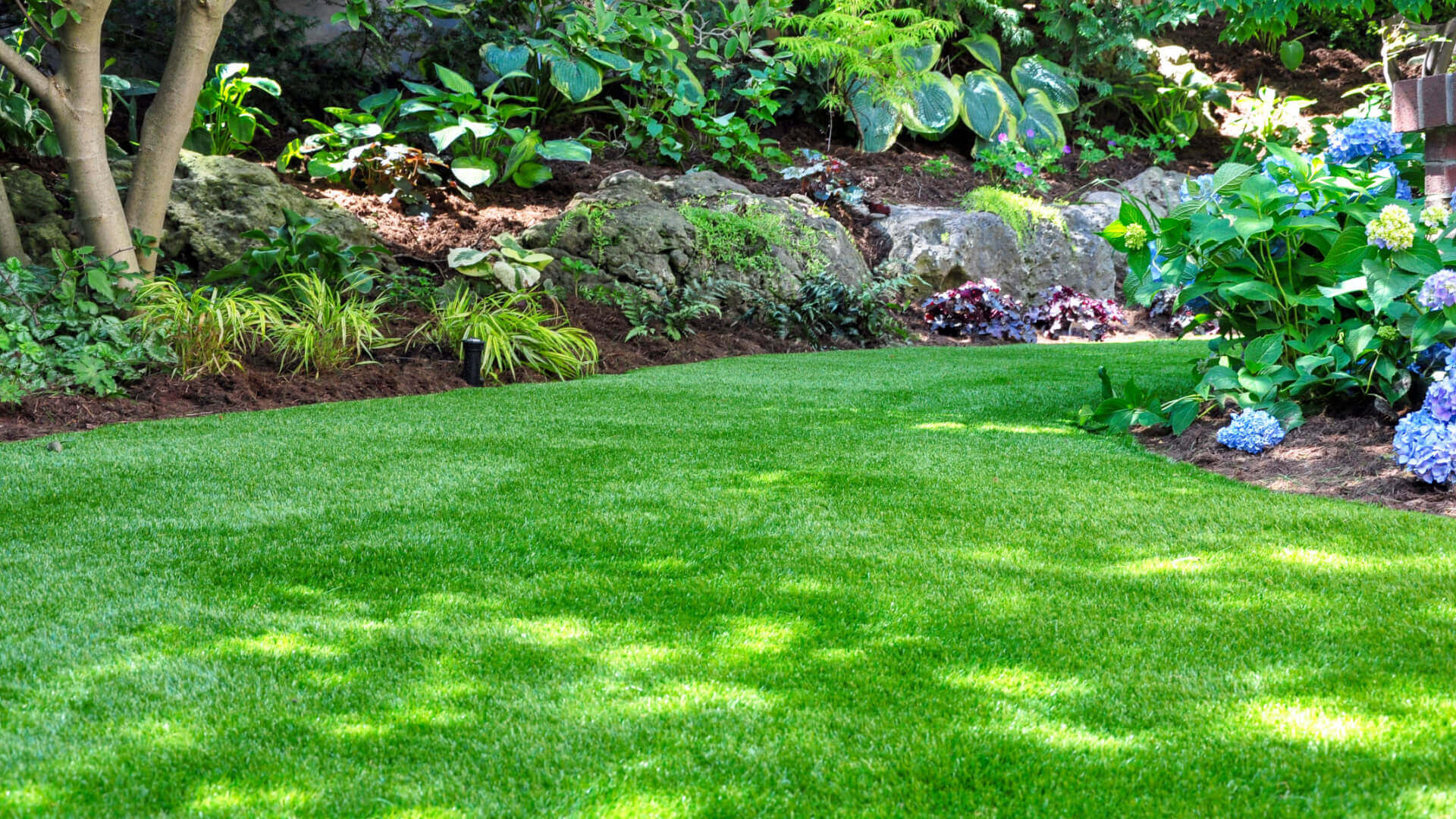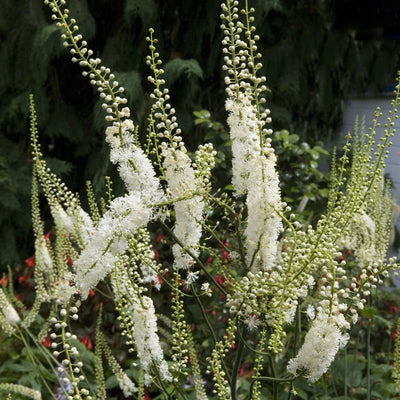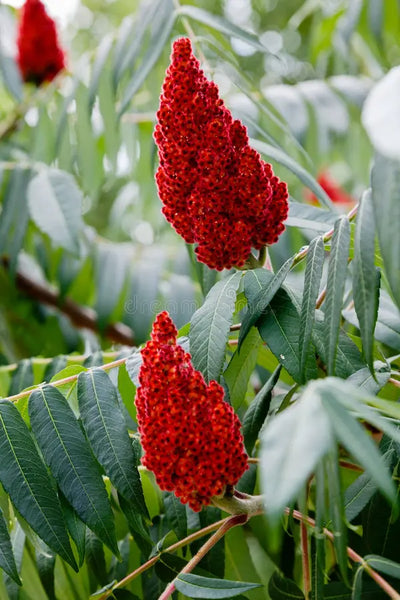Plants That Work Best In Shade Gardens
Do you need plants that thrives in shade? And need to know some that will grow best in shade gardens? We got the answers for you with these 5 plants that gorw in shade gardens:
1. Virginia Bluebells
2. Bugleweed Ajuga
3. Black Cohosh
4. Blood Root Plant
5. Great Blue Lobelia
Creating a stunning shade garden is a breathtaking artistic endeavor that requires meticulous thought and attention to every detail of plant selection, layout, and maintenance. A well-designed shade garden can transform any gloomy yard corner into a vibrant oasis of color, texture, and tranquility. We're thrilled to present this comprehensive guide on integrating Red Crepe Myrtle shrubs, Indian Pink plants, Royal Ferns, and Staghorn Sumac trees into a breathtaking shade garden. We aim to help you create a serene and awe-inspiring outdoor space that will capture the attention of all who behold it. Let's dive in!
Planning Your Shade Garden Design
To ensure that you select the most appropriate plants and position them correctly, it's essential to evaluate the distinctive characteristics of your garden and establish your design goals. Take a close look at factors like the amount of shade available, the type of soil, the level of moisture, and the overall visual effect you hope to achieve. It's a good idea to make a rough sketch of your garden space to visualize how different types of plants will work together to create a harmonious composition. By doing so, you'll be able to design a beautiful garden that thrives in its unique environment.
When creating a garden in a shaded area, carefully choose plants that can thrive in low-light conditions. In addition, it's crucial to select various plants that complement each other in height, texture, and color and create a harmonious and visually appealing landscape.
The Red Crepe Myrtle shrub (Lagerstroemia indica) is an exceptional choice for adding vibrant colors to a shaded garden. With its stunning red, pink, or purple blooms, this shrub can quickly become the focal point of any garden. Its graceful form and long-lasting flowers make it a perfect choice for any garden bed. The Red Crepe Myrtle shrub is an adaptable plant that can be utilized as a standalone specimen or planted in a group to create a stunning visual display.
Pairing the Red Crepe Myrtle with the Indian Pink plant (Spigelia marilandica) creates a striking contrast of color and form. Indian Pink plants feature clusters of tubular red flowers with yellow throats, attracting hummingbirds and butterflies to the garden. Their compact size and shade tolerance make them ideal for underplanting beneath taller shrubs or trees.
To add a touch of elegance and lushness to the garden, incorporate Royal Ferns (Osmunda regalis). These ferns are known for their graceful, arching fronds and vibrant green foliage, which thrive in moist, shaded conditions. Plant them along the edges of pathways or near water features to create a sense of movement and softness in the garden.
Imagine walking through a lush, shaded garden and catching sight of a magnificent tree that seems to tower above the rest. The Staghorn Sumac (Rhus typhina) is a small to medium-sized tree that can add vertical interest and structure to any garden design. Its fern-like foliage is a delight to the eye, and its striking red seed clusters remain on the tree throughout the winter, providing year-round visual interest. These trees can create focal points within the garden or frame views, adding depth and dimension. Take advantage of the opportunity to add this stunning tree to your garden design!
Creating a Cohesive Shade Garden Planting Scheme
Once you have carefully selected the plants that will adorn your garden, it is vital to take the time to plan their arrangement within the garden space. This will enable you to capitalize on their impact and create a cohesive planting scheme to enhance the overall aesthetic. To achieve this, closely examine each plant species' natural growth habits and mature sizes. Doing so lets you determine the ideal location for each plant to thrive and complement the other plants in the garden. Additionally, it is essential to consider each species' unique light and moisture requirements, as this will aid in creating a healthy and vibrant garden that will flourish for years to come.
Consider planting Red Crepe Myrtle shrubs toward the back of your garden bed or along the perimeter for an eye-catching garden design. These vibrant shrubs can add color to your garden and create a stunning backdrop for other plantings. When planting, allow enough space between each shrub to accommodate their eventual size and shape. This will help to showcase their natural form and prevent overcrowding. By following these tips, you can create a beautiful and harmonious garden that will be a joy to behold.
Next, layer the Indian Pink plants in front of the Red Crepe Myrtles to create a seamless transition of color and texture. Position them in clusters or drifts throughout the bed, interspersed with other shade-loving perennials or groundcovers for added interest. Grouping plants with equal water and light needs can simplify maintenance tasks and ensure optimal growing conditions.
Fill in the gaps between shrubs and perennials with Royal Ferns, placing them strategically to provide a sense of balance and rhythm in the garden. Consider creating sweeps or waves of ferns to mimic the organic flow of nature, weaving them between other plantings to create a cohesive tapestry of foliage and texture.
Finally, incorporate Staghorn Sumac trees sparingly throughout the garden to punctuate the landscape and create focal points of visual interest. Position them off-center or at key vantage points to draw the eye and encourage exploration, taking care not to overwhelm the space with too many vertical elements.
Shade Garden Maintenance and Care Tips
Once your shade garden is planted, ongoing maintenance is essential to keep it looking its best throughout the growing season. Regular watering is crucial, especially during dry spells, to ensure that shade-loving plants receive adequate moisture to thrive. Mulching around the base of shrubs and perennials can help maintain dirt moisture and repress weeds, lowering the need for routine watering and upkeep.
Pruning and grooming are essential to keeping your shade garden tidy and healthy. Remove spent flowers and dead or diseased foliage regularly to promote new development and stop the spread of pests and diseases. Trim back any overgrown or unruly branches to maintain a balanced and well-proportioned appearance, not removing more than one-third of the plant's entire vegetation at a time.
Additionally, monitor the health of your plants closely and be prepared to adjust their growing conditions as needed. If certain species are struggling or showing signs of stress, consider relocating them to a more suitable spot within the garden or adjusting their watering and fertilization regimen accordingly. By staying vigilant and proactive in your garden care efforts, you can ensure that your shade garden remains a vibrant and inviting retreat for years.
In conclusion, designing a stunning shade garden using Red Crepe Myrtle shrubs, Indian Pink plants, Royal Ferns, and Staghorn Sumac trees requires careful planning, thoughtful plant selection, and ongoing maintenance. By considering each species' unique characteristics and requirements and creating a cohesive planting scheme that takes advantage of their strengths, you can create a lush and inviting oasis that delights the senses and supplies a peaceful escape from the hustle and bustle of daily life. With good care and awareness, your shade garden will flourish and evolve, becoming a beloved focal point in your outdoor landscape for years.



